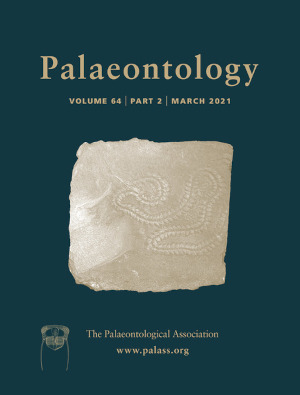Reg. Charity No. 1168330

Although belemnites form a major clade of extinct cephalopods, the early stage of their diversification remains poorly known in time and space. Here we investigate the first diversification episodes of belemnites (order Belemnitida) using a new species‐level database encompassing the Hettangian–Aalenian interval (Early Jurassic – earliest Middle Jurassic) and covering the Western Tethys. Rarefied richness shows a four‐fold increase from the Planorbis chronozone to the Ibex chronozone, a strong decrease between the Margaritatus and Spinatum chronozones, followed by a drop in the Spinatum–Serpentinum interval that is coeval with the second‐order Toarcian biological crisis. The Bifrons chronozone records a high richness that departs significantly from those of the surrounding chronozones. A last richness peak in the Dispansum chronozone precedes a decrease towards the Aalenian. Biogeographical analyses do not reveal any clear large‐scale provincialism for belemnites, in sharp contrast with ammonoids. Such a long‐term homogeneous spatial distribution of belemnites is probably due to: (1) the relatively poorly‐documented fossil record of belemnites, especially in Mediterranean localities; and (2) contrasted dispersal abilities of belemnites compared to ammonoids over the studied time interval.
AcknowledgementsThis contribution benefited from the support of the research project ‘Systematics, palaeogeography and biostratigraphy of Jurassic belemnites’ at the National Museum of Natural History Luxembourg. The authors thank Jean‐Daniel Pinard for his help in the first steps of the database construction. We are grateful to Kenneth de Baets and Margaret M. Yaccobucci who acted as reviewers and helped to improve the manuscript. We also thank Sally Thomas for her help during the editing process.